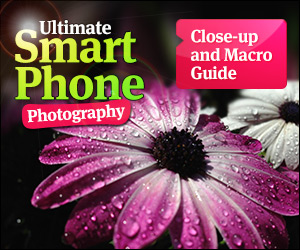Ready to Learn Mobile Photography for Profit
Mobile photography, as stock, would not have been on your radar even 6 months ago, but its evolution in recent months has been rapid and there’s no getting away from it now as a serious source of creative content. The next generation of photography, which is mobile, is upon us and it’s here to stay.
Any concerns about mobile photography not being worthy of consideration should be wrapped up and thrown out with the rubbish. Mobile photography is opening up a whole new spectrum of content supply, which should not be overlooked: as it’s not only growing rapidly; but also diverse and creative.
With constant camera upgrades and more powerful apps, many smartphone files, shown at reasonable sizes, are almost impossible to tell apart from dSLR files. OK, you wouldn’t expect a mobile phone image to hold up as a 48 sheet poster, but nor would you a 35mm file a few years back, or to some degree, even now.
The iPhone 4S & 5 and the Samsung Galaxy all have 8MP cameras, the Samsung S4 Zoom has a 16MP camera and the recently released Lumia 1020 has a whopping 41MP camera with ZEISS optics, the best camera lenses around. On the other hand the Canon 5D Mark III has a 22mp file size. OK we’re not comparing like with like, but I’m sure you get the picture, there’s a certain amount of convergence going on.
The use of mobile photography is still in its infancy, but there’s no doubt that it’s growing in popularity with Time Magazine using a photo of Hurricane Sandy on their cover and the New York Times doing the same with an Instagram shot of baseball star Alex Rodriguez. And they’re not the only ones. Big brands are getting in on the act too, commissioning mobile photographers to shoot for them on multiple projects.
Even though it’s a campaign that’s more about Instagram reach that photography, Mercedes recently called on some of the top mobile photographers for it’s latest “take the wheel” campaign. It has a simple driver: get the most likes from your images, when one of 5 top Instagramers test drive the car over 5 days, and win it.
It is also important not to forget that this new genre of photography has brought with it not only a fresh perspective from the millions of new contributors who have never before submitted content to stock photo agencies but, more often than not, it has also resulted in a more authentic image that hasn’t been styled to within an inch of it’s life.
Mobile photography is often about real people taking pictures of real life and that doesn’t necessarily mean badly composed and badly lit photos. There are millions of talented mobile photographers who have only discovered photography because of smartphones, many of whom produce some exceptional imagery on a regular basis.
Richard Gray, a professional photographer and tutor of the first iPhoneography courses in the UK says, “I’ve been working for one of the leading traditional agencies for some time now and I’ve been mixing up my big camera shots with my iPhone images, without drawing too much distinction between the two. Amazingly my mobile pictures have sold better than my big camera ones. Mobile images are often ones of things that have not been planned so the subjects are usually of something interesting or visually eye-catching. And that (rather than the equipment used) is the important thing for a buyer of an image.”
Ultimately, there’s no denying that an expensive dSLR is a better piece of kit technically than a mobile phone, but your dSLR is not always with you and not always the best piece of kit for the job anyway, think big lens and in your face style vs a subtler, more relaxed approach.
If the image fits the brief and it’s technically acceptable, it has to be the right image to use, doesn’t it?




